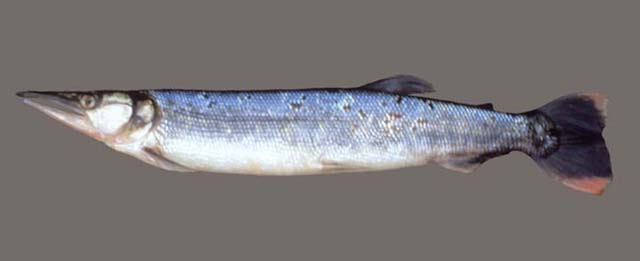| Ctenoluciidae (Pike-characids) |
| 88 cm FL (male/unsexed); max.weight: 6,000.0 g |
|
pelagic; freshwater |
| South America: Rio Amazonas, Rio Tocantins, Río Orinoco, Essequibo River, Oyapock River [= Rio Oiapoque] and rivers of Amapá, and Pará, Brazil. |
|
Dorsal spines (total): 0-0; Dorsal soft rays (total): 10-11; Anal spines: 0-0; Anal soft rays: 9-11; Vertebrae: 48-49. The location of the dorsal fin base distinctly anterior to the vertical through the anal fin origin distinguishes this species from all ctenoluciids except B. lucius and B. xyrekes, from which it can be distinguished by the discrete black spot on the basal portions of the caudal fin rays, and also by different pigmentation on the body. |
| Usually inhabits areas with rapid water, always on the surface, behind obstacles like rocks and logs (Ref. 54653). Some small-sized individuals occur in calmer waters such as lakes, small bays (Ref. 54653). Solitary or forms small schools (Ref. 54653). A carnivorous fish with preference on fish (Ref. 54653). |
|
Least Concern (LC); Date assessed: 21 October 2020 Ref. (130435)
|
| harmless |
Source and more info: www.fishbase.org. For personal, classroom, and other internal use only. Not for publication.

